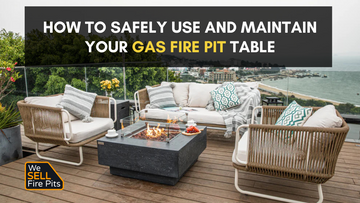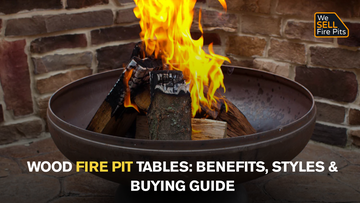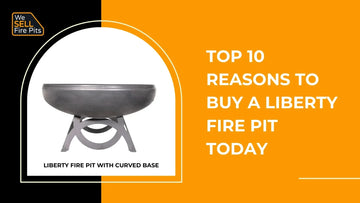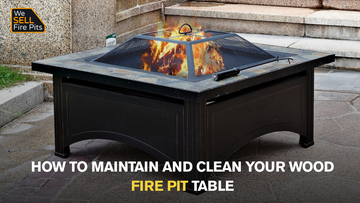A gas fire pit can transform any backyard or patio into a welcoming space for family gatherings, quiet evenings, or weekend entertainment. With clean-burning fuel and instant ignition, these fire features have become a top choice for homeowners looking for convenience, safety, and style. However, the right way to use and take care of it is important for long-term safety and efficiency, just like with any outdoor fixture.
Understanding the Basics of a Gas Fire Pit
How Gas Fire Pits Work
Gas fire pits operate using either propane or natural gas as fuel. These units are designed with internal burners that distribute gas evenly across a burner pan, igniting through a manual spark or electric ignition system. Once lit, the flames dance across lava rocks, fire glass, or ceramic logs to create an inviting ambiance.
Gas fire pits burn cleanly, without making ashes or smoke like traditional wood-burning fire pits. These features make them perfect for patios in cities and low-maintenance gardens. To use it safely and effectively, you must first understand how the fuel delivery and lighting system work.
Types of Gas Fire Pits
There are several types of gas fire pits available, each with unique features and installation requirements. Portable propane models are ideal for smaller patios or renters, while built-in natural gas units are popular in custom outdoor kitchens and larger living areas. Some models double as tables, offering functionality and style in one. Choosing the right type depends on your available space, fuel access, and intended usage.
Safety Tips for Everyday Use

Proper Setup and Ventilation
Before using your gas fire pit, always ensure it is set up on a flat, non-flammable surface away from walls, railings, or overhangs. Adequate ventilation is necessary to allow gas fumes to dissipate safely. For built-in units, professional installation is recommended to ensure gas lines are properly connected and vented.
Never operate your fire pit in enclosed areas such as garages, tents, or under low-hanging structures. If you don't have enough airflow, carbon monoxide can build up and cause fires.
Ignition Safety and Monitoring Flames
When igniting the fire pit, follow the manufacturer’s instructions carefully. Keep the lid or protective cover open during ignition, and make sure the control knob is in the “off” position before turning on the gas. If the flame does not ignite within a few seconds, turn off the gas, wait a few minutes for the area to ventilate, and try again.
Once the fire is lit, monitor the flames closely. A steady, blue, or yellow flame indicates proper gas flow. If you notice inconsistent flames, strange smells, or hear hissing sounds, turn off the fire pit immediately and check for gas leaks.
Routine Maintenance for Longevity
Cleaning the Burner and Components
Regular cleaning is necessary to keep your gas fire pit functioning efficiently. Over time, debris, dust, and insects can block the burner ports, affecting flame quality. Using a soft brush and light soap to clean the burner gets rid of buildup and makes sure gas flows properly.
Clean metal surfaces to keep them from rusting, and look for cracks or staining in the fire media. If you need to, replace any lava rocks or fire glass that are broken.
Checking for Gas Leaks
Safety checks should include a routine inspection of gas connections and hoses. Clean the lines with a mix of water and dish soap, then turn on the gas. If bubbles appear, there is a break. Stop the gas right away and fix or tighten the parts that are broken.
If you suspect a persistent gas leak or cannot locate the issue, contact a licensed technician. It is essential to resolve any gas-related concerns before resuming use.
Seasonal Care and Storage

Protecting Your Fire Pit from the Elements
Even though most gas fire pits are made to be used outside, being in bad weather can shorten their life. During the off-season or bad weather, protect your unit with a cover that won't get damaged by the weather. Covers keep dirt, water, and UV rays from hurting the burners and finish.
For portable propane fire pits, disconnect the tank and store it upright in a cool, ventilated area. Built-in units should have their gas lines shut off at the source when not in use for extended periods.
Winterization and Inspection
Before winter sets in, inspect your gas fire pit for any signs of wear, corrosion, or leaks. Clean the burner thoroughly and remove any fire media to avoid freezing and cracking.
Enhancing Safety with Accessories
Glass Guards and Flame Screens
Adding accessories can improve both safety and aesthetics. Glass wind guards help shield the flame from strong winds, maintaining a steady burn and reducing the risk of fire spread. Flame screens offer an extra layer of protection against sparks or sudden flare-ups, which is particularly useful when children or pets are present.
Remote Control and Shut-Off Systems
Modern gas fire pits may include remote ignition and automatic shut-off systems. These features offer convenience and enhance safety by allowing users to control the fire pit without direct contact. Timed shut-offs and temperature sensors are also helpful in preventing overheating or gas leaks.
A gas fire pit offers a perfect blend of style, warmth, and functionality, making it a valuable addition to any outdoor space. However, to enjoy its full benefits, it is essential to use and maintain it with care. From proper setup and safe ignition practices to regular cleaning and seasonal protection, each step contributes to a safer and more enjoyable experience. By following expert guidelines and being mindful of safety precautions, homeowners can ensure their gas fire pit remains a reliable and beautiful centerpiece for years to come.




